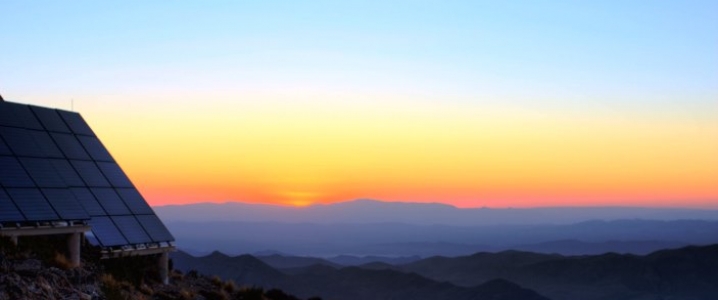Saudi Arabia has pledged to chip in $10 billion in funds to South Africa’s ailing power sector, according to a South African government spokesperson cited by CNBC.
The funds will be used to build refineries for one and will also be used to advance petrochemicals and renewable energy projects in the developing economy of South Africa.
The funds can’t come soon enough for South Africa, whose power sector outages likely represent the African nation’s number one problem.
In 2016, Oilprice spoke of its ongoing energy crisis that took the shape of a staggering 99 days of rolling blackouts in 2015. Eskom, the country’s electric utility that provides 95 percent of the country’s electricity needs, has experienced blackouts this year as well, in part due to striking Eskom workers who sabotaged the national grid. And its power problems are far from over.
A national blackout—not a rolling blackout but a total blackout--presents unique challenges for Eskom, because in the event of a complete blackout, Eskom would need to restart its power plants without any electricity at all—a unkind scenario referred to as a “black start”. A black start could take as much as two or three weeks, according to Eskom. Related: Goldman Predicts Major Solar Market Contraction
Enter Saudi Arabia. The Kingdom’s funds will represent just a portion of the $100 billion that South Africa is looking for to upgrade its underfunded energy sector.
To the disappointment of many, South Africa still relies heavily on coal, but South Africa’s 15 coal-fired plants are set to be reduced to just 3 over the next 20 years. The push to shutdown coal-fired plants came shortly after reports surfaced that Eskom was experiencing coal shortages.
Saudi Arabia’s motivations for investing in South Africa’s power sector is largely in line with Saudi Arabia’s Vision 2030, which seeks to diversify away from oil dependence and towards foreign economies. Despite its power sector woes that have diminished its GDP, South Africa remains Africa’s second-largest economy, representing new opportunities for The Kingdom.
But Saudi Arabia is not first to the table. In 2014, Russia wanted a piece of the pie, signing an agreement with South Africa whereby it would supply SA with eight nuclear power stations valued at $76 billion—dwarfing Saudi Arabia’s latest investment and well above Eskom’s total assets, which are currently valued somewhere around $50 billion. The Russian deal attracted criticism and prompted investigations into the deal’s “special favors”, which included indemnification for Russia should any nuclear accidents take place—leaving South Africa to bear the brunt of the costs associated with a nuclear accident. It is unclear where that contentious deal currently stands. Related: Has The Movement For CO2 Controls Peaked?
Saudi Arabia’s pledge of $10 billion was forged during South African President Cyril Ramaphosa’s whirlwind tour. Ramaphosa went with hand out to not just Saudi Arabia but to the United Arab Emirates and Nigeria as well. The United Arab Emirates, too, committed to ponying up $10 billion, although it is unclear what the UAE’s $10 billion will be used for, unlike Saudi Arabia’s funds, whose plans are quite clear.
Interestingly enough, South Africa imports about 20 percent of its crude oil from Iran—no doubt Saudi Arabia will be happy to weigh in on South Africa’s Iranian import plans in the future.
Despite Saudi Arabia’s $10 billion commitment, energy reform in South Africa is slow going. “Projects in the energy sector are almost invariably delayed due to opposition from NGOs (non-governmental organizations) or trade unions,” said Ben Payton, head of Africa research at consultancy Verisk Maplecroft. “South African government agencies are often unreliable partners.”
By Julianne Geiger for Oilprice.com
More Top Reads From Oilprice.com:
- China Just Doubled Oil Shipments To North Korea
- Who Actually Benefits From Sanctions On Iran?
- Trump Tariffs Could Delay Permian Relief



















Crown Prince Mohammed bin Salman has already committed $200-$350 bn of investment in the United States and arms purchases agreed upon during the visit by US President Donald Trump to Riyadh on May 20, 2017.
Saudi Arabia announced on the 7th of April 2018 that it plans to invest $200 bn in building the world’s largest solar plant. Japanese multinational conglomerate SoftBank and Prince Mohammed bin Salman signed a memorandum of understanding for the massive project that would produce 200 gigawatts of solar photovoltaic power.
During his visit to Houston, Prince Mohammed announced that Saudi Aramco is planning to spend between US$8 and 10 billion on Texas petrochemical investments.
With announced investments adding up to $420-£570, Saudi Arabia will need the entire revenue of oil exports for the next three years to meet the promised investments let alone meeting a budget estimated at $261 bn this year and a budget deficit of $52 bn.
At an average oil price of $75 a barrel, Saudi Arabia could be earning some $192 bn from the export of 7 million barrels a day (mbd). For a country whose budget depends on the oil revenue to the tune of 90%, there is a huge discrepancy between the promised investments and the oil revenues.
Dr Mamdouh G Salameh
International Oil Economist
Visiting Professor of Energy Economics at ESCP Europe Business School, London